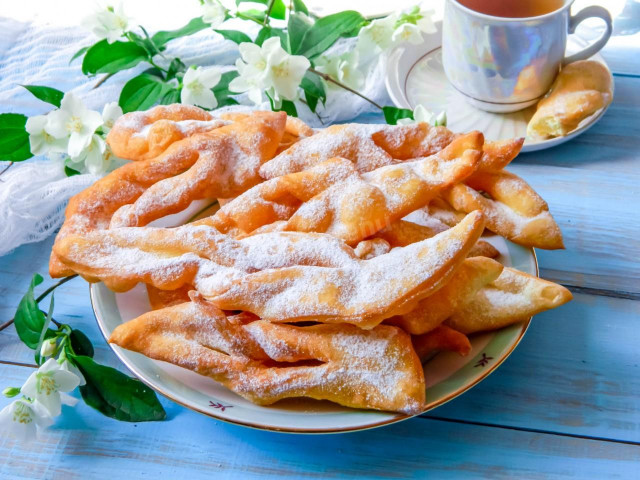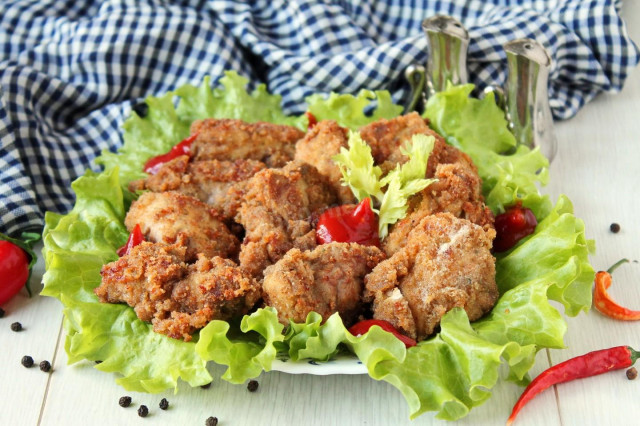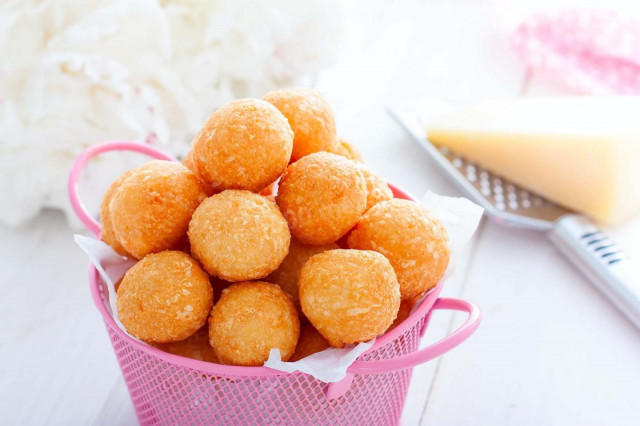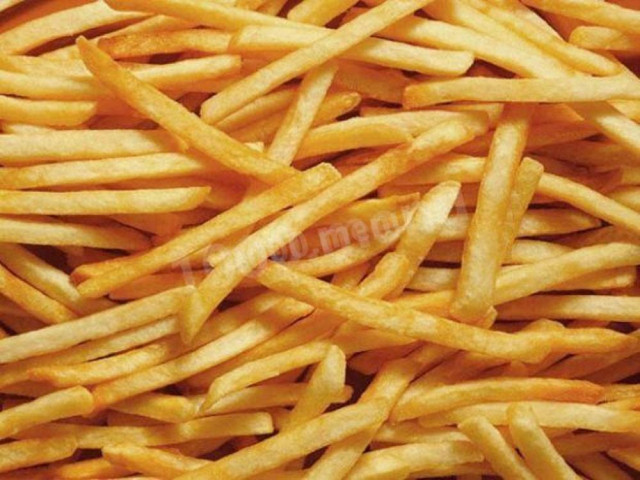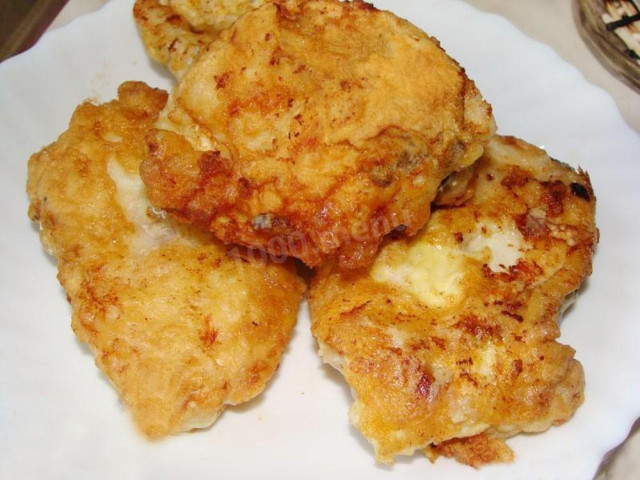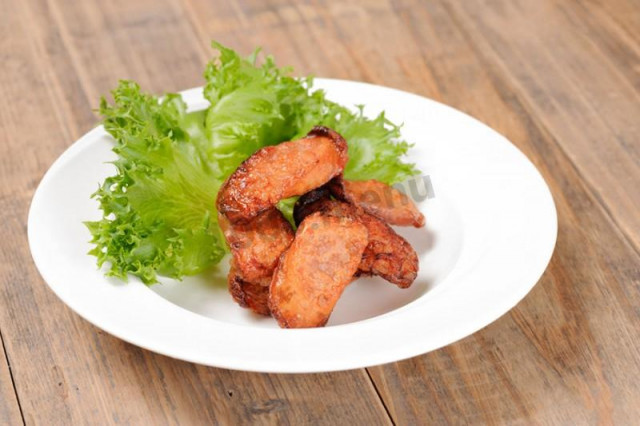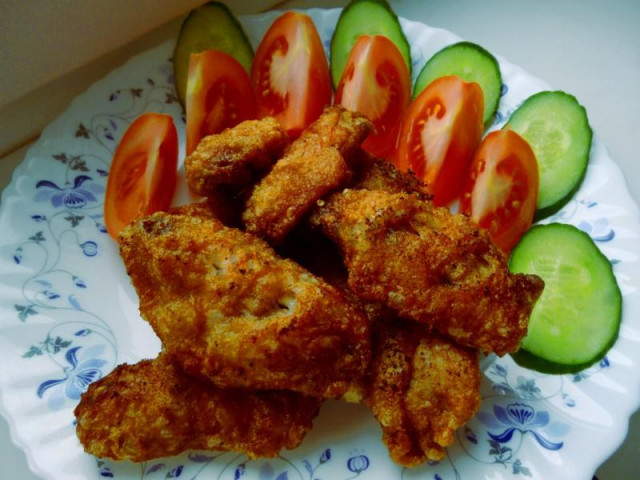Composition / ingredients
Step-by-step cooking
Step 1:
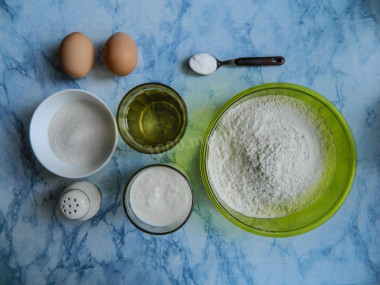
How to make soft brushwood on kefir? Prepare all the ingredients for the dough. Take the flour of the highest grade. Eggs - C1 or C0. If you don't have powdered sugar, you can make it yourself by grinding sugar in a coffee grinder. This is better ready-made, since in addition to sugar there will be no impurities in it, which are usually added to the powder so that it remains crumbly. Sour milk can be used instead of kefir. The oil should be odorless and suitable for heating.
Step 2:
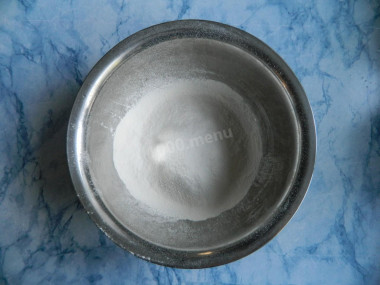
Take a deep bowl in which it will be convenient to mix dry and liquid ingredients. Sift half of the flour into it to sift out small debris and the dough is saturated with oxygen.
Step 3:
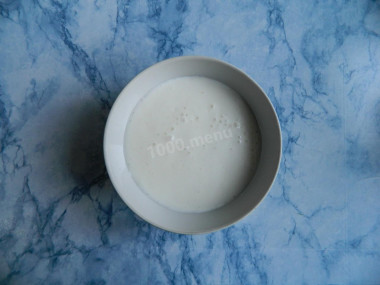
Kefir must be removed from the refrigerator in 1-1.5 hours. In order for the dough to be successful, it must be at room temperature. In a separate container, mix kefir with soda and stir to start the reaction.
Step 4:
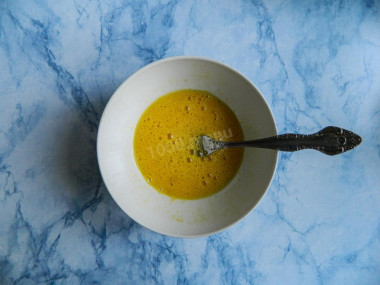
Eggs should also be at room temperature. Wash them with soap, dry them with a towel or napkin and break them into a bowl. Add 2 tablespoons of sugar, salt and whisk with a fork or whisk. It is not necessary to beat until the foam appears. Adding salt improves the taste of cookies and simplifies the process of beating eggs.
Step 5:
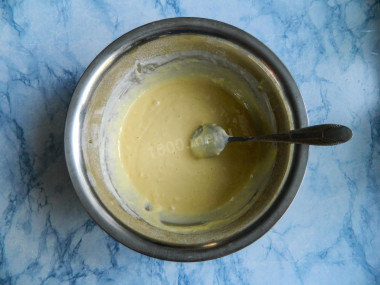
In a bowl with flour, add the mixtures obtained in steps 3 and 4. Add the liquid part to the dry one, and not vice versa, so that the dough turns out to be successful. Since the properties of flour of the same grade, but different manufacturers differ, in order to get the desired consistency, add the remaining flour in small portions.
Step 6:
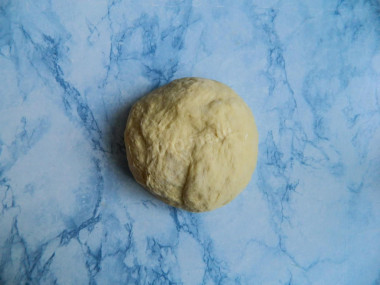
When it becomes difficult to knead with a spoon, start doing it with your hands. Knead the dough thoroughly. The dough should be slightly elastic, but tender and not stick to your hands. Do not make the dough too steep, so as not to get a rubber brushwood instead of a soft one.
Step 7:
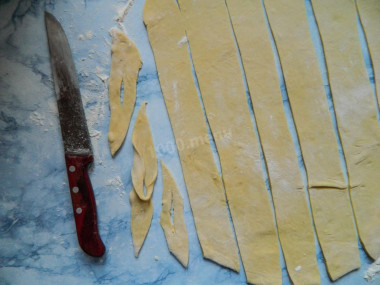
Roll out the dough on a work surface sprinkled with flour into a layer 0.4-0.5 cm thick. Cut into strips 3-5 cm wide and then into diamonds. In the middle of each piece of dough, make an incision and turn one edge through it. You can try to make the same "twigs". Personally, I make them different in shape and size. You can show imagination in the process and introduce children to modeling. Sprinkle your hands, knife and rolling pin with flour so that the dough does not stick.
Step 8:
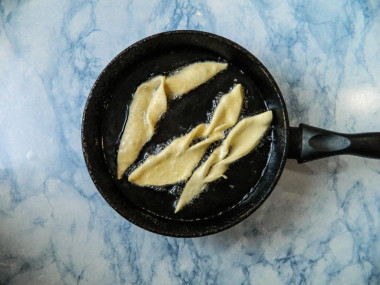
For frying, take either a pot or a frying pan with high sides. Pour enough oil so that the brushwood floats in it. Heat the oil over medium heat, because it is dangerous to work with hot oil and you can get burned. In order for the oil not to splash, you can add a pinch of salt to it, it will absorb moisture, if there is any. Check the required oil temperature by throwing a small piece of dough. It should boil. Gently dip the brushwood into the oil.
Step 9:
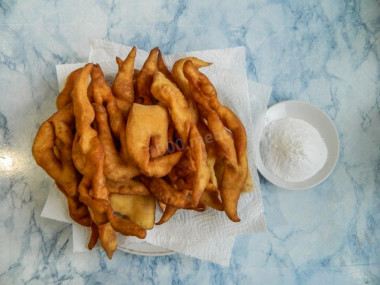
Fry on both sides until lightly browned. Spread the finished brushwood on paper towels to remove excess oil.
When the oil drains and the brushwood cools down a little, sprinkle it with powdered sugar and serve it with tea. The brushwood turns out to be soft. Only those areas where the dough has formed large bubbles, the brushwood crunches. Keep in mind that for frying you may need either more or less vegetable oil than indicated in the recipe. It depends on the dishes, on the properties of the dough and the oil itself.
Be prepared for the fact that flour may need more or less than indicated in the recipe. Focus not on the amount of flour, but on the desired consistency of the dough. Read a lot of useful information about flour and its properties in this article!
Use oil with a high smoking temperature for frying! Any oils are useful only until a certain temperature is reached - the point of smoking, at which the oil begins to burn and toxic substances, including carcinogens, are formed in it.
Unrefined oils, with rare exceptions, have a low smoking point. There are a lot of unfiltered organic particles in them, which quickly begin to burn.
Refined oils are more resistant to heating, and their smoking point is higher. If you are going to cook food in the oven, on a frying pan or grill, make sure that you use oil with a high smoking point. The most common of the oils with a high smoking point: refined varieties of sunflower, olive and grape.
Caloric content of the products possible in the composition of the dish
- Granulated sugar - 398 kcal/100g
- Sugar - 398 kcal/100g
- Kefir fat - 62 kcal/100g
- Kefir of 1% fat content - 38 kcal/100g
- Low-fat kefir - 30 kcal/100g
- Kefir "doctor beefy" 1,8% fat content - 45 kcal/100g
- Kefir 2.5% fat content - 53 kcal/100g
- Vegetable oil - 873 kcal/100g
- Salt - 0 kcal/100g
- Wheat flour - 325 kcal/100g
- Powdered sugar - 374 kcal/100g
- Baking soda - 0 kcal/100g
- Chicken egg - 80 kcal/100g

